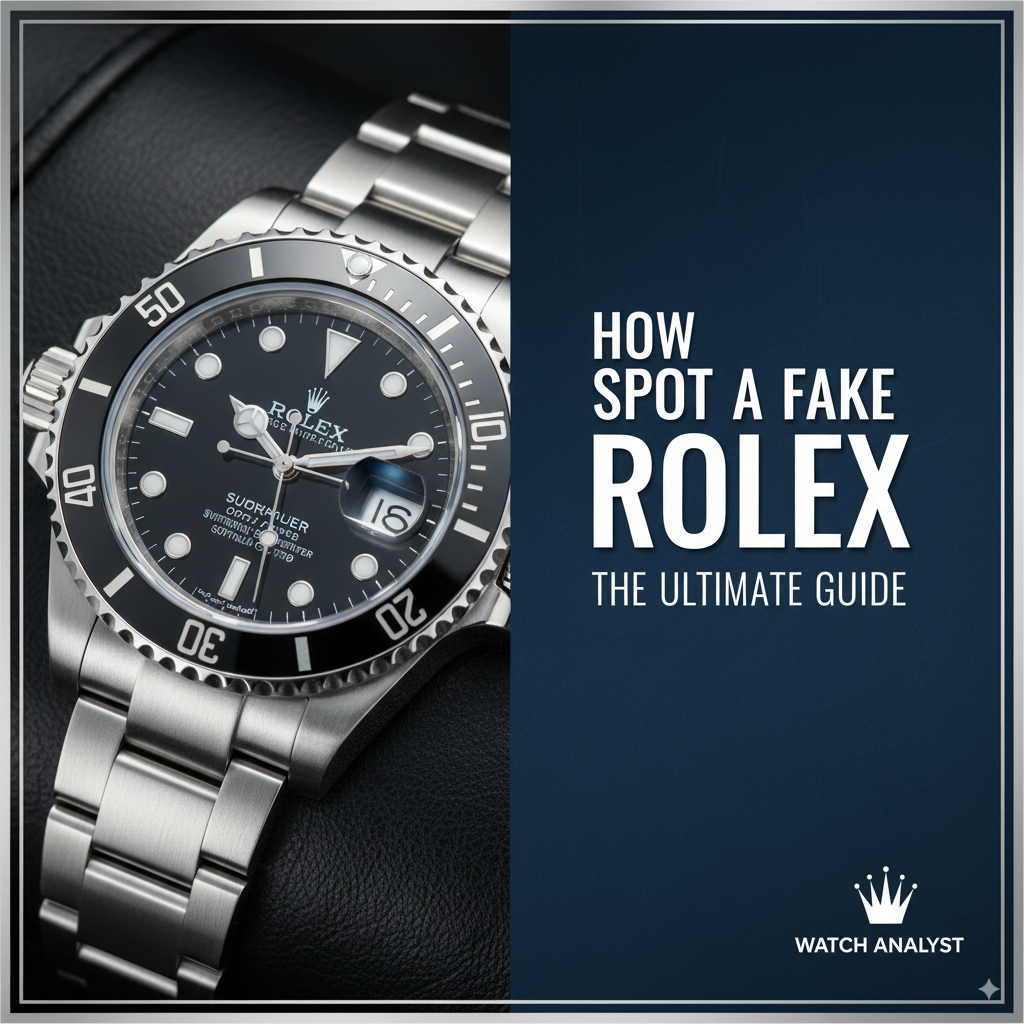The Ultimate Guide to Spotting a Fake Rolex: 10 Telltale Signs of an Authentic Timepiece

A Rolex on the wrist is more than just a time-telling device; it's a statement of achievement, a testament to exquisite craftsmanship, and a legacy to be passed down through generations. However, the very prestige that makes a Rolex so desirable also makes it a prime target for counterfeiters. With forgeries becoming increasingly sophisticated, it is essential for any prospective buyer to be armed with the knowledge to distinguish a genuine masterpiece from a clever imitation.
This guide provides ten crucial areas to inspect when authenticating a Rolex.
1. The Weight and Feel: First Impressions Matter
A genuine Rolex should feel significant. Rolex exclusively uses high-quality, dense materials such as proprietary 904L stainless steel (Oystersteel), 18k gold, or platinum. If the watch feels unusually light, it could be a red flag indicating inferior metals often used in counterfeits.
2. The Sweep of the Second Hand: A Ticking Tell
A true Rolex automatic movement glides smoothly with a sweeping second hand. Counterfeits often use quartz movements, producing a distinct ticking motion. Note: Rolex did produce Oysterquartz, but these are rare.
3. The Cyclops Lens: A Window to Authenticity
Authentic Rolex models with a date display feature a Cyclops lens that magnifies the date 2.5x. On fakes, magnification is weaker (around 1.5x) and often misaligned.
4. Serial and Model Numbers: The Engraved Identity
Genuine Rolex serial and model numbers are deeply and precisely engraved, often on the rehaut in modern models. Fakes typically have shallow, sandy, or poorly etched numbers.
5. The Dial: A Study in Perfection
All text and markers on a Rolex dial should be crisp, evenly spaced, and flawless. Counterfeits may show smudging, uneven printing, or poorly executed crown logos.
6. The Caseback: Smooth and Unadorned
Most Rolex watches feature a smooth, unengraved caseback. Exhibition-style clear casebacks are almost always a sign of a fake.
7. The Winding Crown: A Mark of Craftsmanship
The winding crown should display a well-defined Rolex coronet logo, precisely machined. On fakes, this detail is often poorly stamped or less defined.
8. The Sound of Silence: Listening for Authenticity
Hold the watch close to your ear. A genuine Rolex runs almost silently with a faint, high-frequency buzz. Loud ticking is a giveaway of a counterfeit movement.
9. Materials and Finish: The Rolex Standard
Bracelet links should feel solid, clasps should close smoothly, and finishing should be flawless. Fakes may have rough edges, plated metals, or surfaces that wear poorly.
10. When in Doubt: Seek Professional Verification
The most reliable way to confirm authenticity is through a certified watchmaker or authorized Rolex dealer. Always buy from trusted sellers and avoid deals that seem too good to be true.
Conclusion: Investing in Confidence
By examining these ten key details, you can reduce the risk of buying a counterfeit Rolex. A genuine Rolex is an investment in craftsmanship and enduring value. The peace of mind in owning an authentic piece of horological history is priceless.
